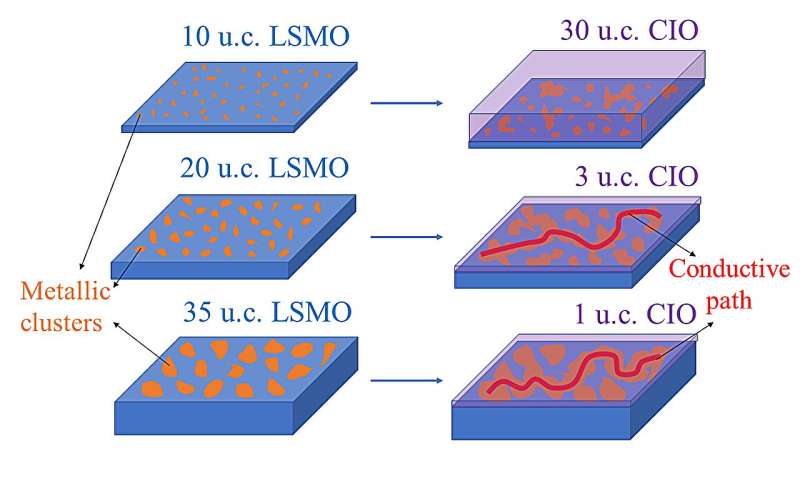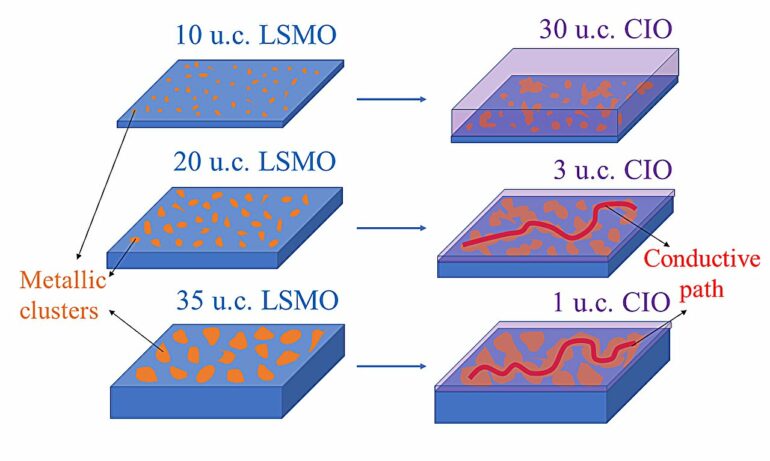A research team has successfully achieved an atomically controlled insulator-to-metal transition in iridate/manganate heterostructures. Their findings were recently published in Nature Communications.
Conductive interfaces in insulator-insulator heterostructures are central to modern electronics. Compared with a band insulator, a correlation insulator typically has a richer phase diagram that even covers both insulating and metallic states by itself. However, a conductive interface in heterostructures composed of two correlated insulators is rarely reported.
In this research, the team investigated the heterostructure of a 5d iridate, CaIrO3 (CIO), and a 3d manganite, La0.67Sr0.33MnO3 (LSMO). While CaIrO3 is a Dirac semimetal and La0.67Sr0.33MnO3 a robust half-metal, both materials can be stabilized into insulating states under the right conditions. This combination forms a platform to explore emerging metallicity at their interface.
The researchers synthesized the heterostructures using a precise deposition method, creating layers with varying thicknesses of CIO and LSMO. Under tensile strain, both materials became insulators, yet the resulting heterostructure exhibited electrical properties that varied depending on the thickness of the CIO layer.

The schematical diagram of the percolation-type insulator-to-metal transition. The conductive path is highlighted by red curves. © Hao Lin
A key finding was the heterostructure’s high saturation field, exceeding 30 Tesla at 20 K, much higher than the individual components alone. This suggested the presence of electronic phase separation, where metallic clusters formed a conductive path when subjected to a high magnetic field.
The team’s investigation also revealed that the insulator-to-metal transition was driven by charge transfer at the interface, a result of the nontrivial percolation effect. By carefully controlling the electronic correlation, they successfully induced the transition in certain heterostructures, specifically at a single unit-cell thickness of CIO.
This research not only provides new insights into the behavior of correlated insulator heterostructures but also highlights their potential in the design of next-generation electronic devices.
The team was led by Prof. Lin Hao from the High Magnetic Field Laboratory at the Hefei Institutes of Physical Science of the Chinese Academy of Sciences, in collaboration with Prof. Chen Kai and Prof. Zhu Hong from the University of Science and Technology of China.
More information:
Enyang Men et al, An atomically controlled insulator-to-metal transition in iridate/manganite heterostructures, Nature Communications (2024). DOI: 10.1038/s41467-024-52616-8
Provided by
Chinese Academy of Sciences
Citation:
Insulator-to-metal transition achieved in iridate/manganate heterostructures (2024, October 17)



